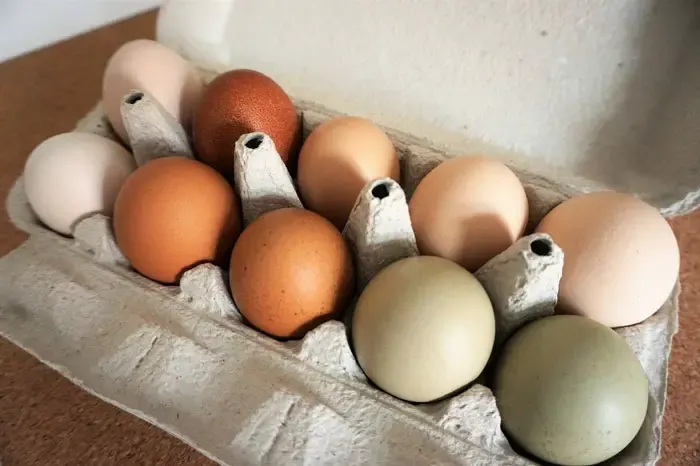Eggs are a fairly normal part of many breakfasts around the world.
But did you know that the way the animals that produce these eggs are raised and treated affects the quality of the finished product?

As a matter of fact, there are some fairly obvious differences between eggs that are factory farmed and eggs that are free range.
Let’s start by comparing the differences in living conditions.
Factory Farmed Eggs
These eggs are typically taken from hens that don’t live particularly healthy lives.
These hens are usually cooped up in as little as 67 square inches of space and are stuffed with foods full of antibiotics.
This means they have no space to spread their wings or even move around.
They often have lots of broken bones and can’t go outside, ever.
Free Range Eggs
Free range hens live in open barns and aren’t forced into cages.
As such, they’re able to go outdoors, graze on food, and eat a better, healthier, natural diet.
It’s a much more humane way to raise hens.
Here’s the issue with the whole “free range” term – there is currently no program in place that verifies whether eggs truly are free range.
Companies can use labels that state they are free range without truly being honest.
If you want to make sure you purchase truly free range eggs, you have to do your research.
Your best bet is to purchase from a company or organization that sells eggs that are certified to be organic, or certified to be local sustainable products.
This means their hens will be fed more natural food and live in better conditions, as hens raised organically cannot be fed antibiotics and therefore must be raised healthily to avoid illness.
Color of Eggs
Another way you can differentiate between free range eggs and factory farmed eggs is through their coloring.
No, we don’t mean the colors if the eggshells, as those don’t necessarily mean anything.
We mean the colour of an egg’s yolk.
Egg yolk color is determined by what the laying hen eats.
Here’s how to differentiate.
- Dark Yellow-Orange Yolks
Eggs with dark orange yolks come from hens who eat plants with the pigment xanthophylls.
This includes foods like yellow corn, alfalfa, and even most green plants.
Hens raised free range have more access to these nutritious food types.
- Pale Yellow Yolks
Eggs with pale yolks are usually from hens that eat bland foods such as barley, white cornmeal, or wheat.
However, do note that some factory farmed eggs have artificially dyed yolks to make them look darker.
Need more reason to make the switch to free range?
Here are some great ones!

3 Reasons You Should Be Buying Free Range Eggs
1. Better Nutrition
Free range eggs are packed with nutritious beta-carotenes, lutein, and zeaxanthin, which are antioxidants that provide countless health benefits to consumers.
They also contain:
- More vitamin A
- More vitamin B
- 6 times more vitamin D
- More vitamin E
- More omega-3 fatty acids
2. More Humane and Animal-Friendly
There’s not much to add to this.
Hens allowed to roam around, have their own space, and live a healthy life are treated more humanely than those stuffed into cages and force-fed medicine and poor diets.
3. They Taste Great
Organic eggs have been reported to taste better, and free range organic eggs taste the best – at least, according to those who have tried it!
Even if you don’t notice any particular difference in taste, they’ll taste just as good as your usual factory farmed eggs and be better for you overall.
SEE ALSO: Here Are 5 Tips To Help You Pick The Best Watermelon
